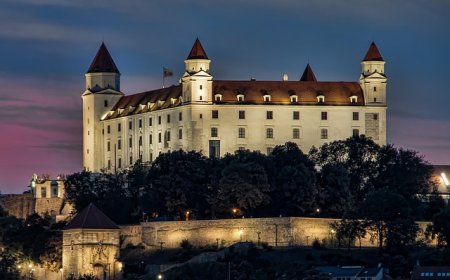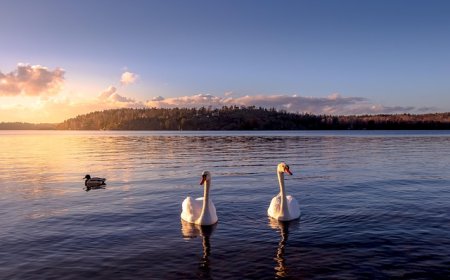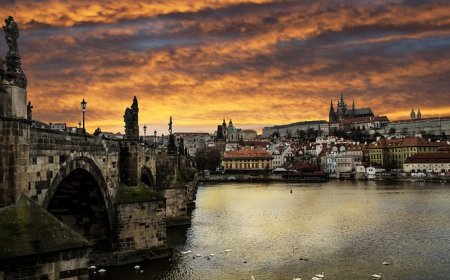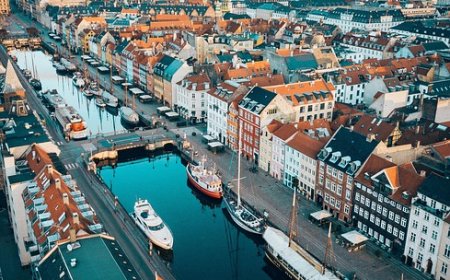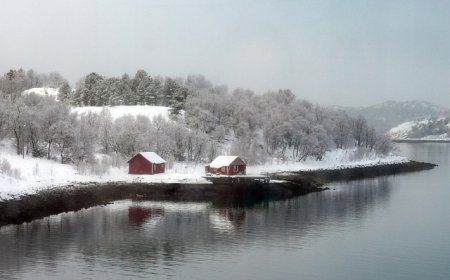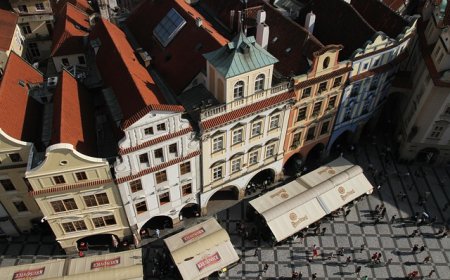Serbia for Students: Geography, Culture, and History of a Balkan Nation
Explore Serbia’s geography, history, people, and traditions in this student-friendly article. Learn about Belgrade, the Danube, and Serbian customs.
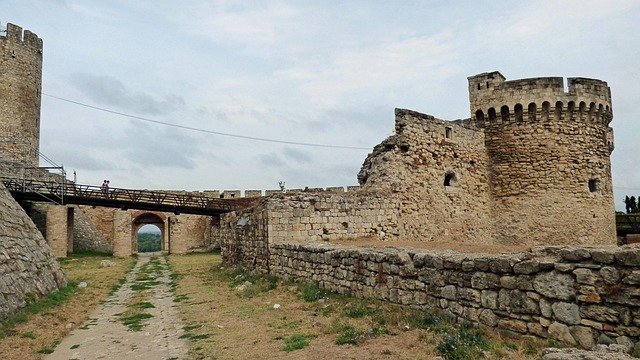
🇷🇸 Serbia: A Land of Rivers, Fortresses, and Resilient Culture
🗺 Introduction
Serbia is a country located in the Balkan Peninsula of Southeastern Europe. Known for its deep rivers, historic cities, and strong cultural identity, Serbia is a place where East meets West. Throughout its long and often difficult history, Serbia has remained a proud nation filled with music, hospitality, and resilience.
Though it has experienced empires, wars, and major changes, modern Serbia is full of life. With castles, mountains, and the mighty Danube River, Serbia offers a unique blend of natural beauty and cultural richness.
🌍 Geography and Location
Serbia is a landlocked country, meaning it does not have any coastline. It shares borders with Hungary, Romania, Bulgaria, North Macedonia, Croatia, Bosnia and Herzegovina, Montenegro, and partially recognized Kosovo.
Its geography includes plains in the north, hills and forests in the center, and mountains in the south and west. The Danube River, one of the most important rivers in Europe, flows through Serbia, along with the Sava, Morava, and Drina Rivers.
Serbia has a continental climate, with hot summers and cold winters. Snow covers the mountains in winter, making them popular for skiing, while spring and fall bring pleasant weather for festivals and farming.
🏙 Cities and Regions
The capital and largest city is Belgrade, one of the oldest continuously inhabited cities in Europe. Located at the meeting point of the Danube and Sava Rivers, Belgrade has been a center of trade and culture for centuries. Today, it is known for its historic fortress, lively streets, and mix of old and modern buildings.
Other important cities include:
Novi Sad, a cultural and university city, home to the Petrovaradin Fortress and Exit music festival
Niš, a southern city with Roman roots and the birthplace of Emperor Constantine the Great
Kragujevac, an industrial and historic center in central Serbia
Subotica, known for its colorful buildings and art nouveau architecture
Each region of Serbia has its own customs, dialects, and traditional foods, making the country rich in diversity.
👨👩👧👦 People, Language, and Culture
Serbia is home to about 6.6 million people. The majority are ethnic Serbs, and the official language is Serbian, which is written in both the Cyrillic and Latin alphabets. Minority groups include Hungarians, Bosniaks, Roma, and others, especially near the borders.
Serbian culture is a mix of Slavic traditions, Byzantine heritage, and modern European influences. Family life is central to Serbian society, and hospitality is very important—visitors are often welcomed with food, drink, and friendly conversation.
Music plays a big role in Serbian life, from traditional folk songs to modern pop. Kolo, a circle dance, is performed during weddings and celebrations. Serbian Orthodox Christianity influences many traditions, holidays, and national symbols.
🍽 Food and Traditions
Serbian food is hearty, flavorful, and often cooked slowly with care. Meals usually include bread, meat, cheese, vegetables, and soups. Families often gather around big tables to share meals, especially on holidays.
Popular Serbian dishes include:
Ćevapi – grilled minced meat sausages, served with onions and flatbread
Sarma – cabbage rolls stuffed with meat and rice
Prebranac – baked beans with paprika and onions
Ajvar – a red pepper spread served with bread or meat
Pita – layered pastry with cheese, meat, or apples
Special occasions include Slava, a celebration of a family's patron saint, which includes a feast, candles, and religious customs. Major holidays like Easter, Christmas, and Statehood Day are celebrated with food, song, and tradition.
🏛 History of Serbia
Serbia’s history stretches back to ancient Roman times, and the city of Niš is famous for being the birthplace of Emperor Constantine the Great. In the Middle Ages, Serbia became a powerful kingdom, and later an empire under rulers like Stefan Dušan.
In the 15th century, Serbia fell under the Ottoman Empire and remained under foreign rule for nearly 400 years. In the 19th century, Serbia regained independence and played an important role in the events leading up to World War I. In fact, the war began after the assassination of Archduke Franz Ferdinand in Sarajevo, by a Bosnian Serb.
After World War II, Serbia became part of Yugoslavia, a country made up of several Balkan nations. When Yugoslavia broke apart in the 1990s, Serbia experienced wars, political struggles, and international challenges. In 2006, Serbia became an independent country after separating peacefully from Montenegro.
Today, Serbia is a democratic republic with close ties to both the European Union and its Balkan neighbors.
🌿 Nature and Environment
Serbia’s natural landscapes include mountains, forests, rivers, lakes, and fertile plains. National parks like Tara, Kopaonik, and Đerdap Gorge are home to bears, eagles, deer, and rare plants. The Đerdap Gorge along the Danube is one of the most scenic and historic parts of the country.
Serbia is also working to protect its environment by reducing pollution and promoting nature education. Schools often take students on field trips to nature reserves to teach them about wildlife and conservation.
Outdoor activities such as hiking, skiing, canoeing, and birdwatching are popular for both locals and tourists.
📚 Vocabulary List
Word Definition
Balkan Peninsula A region in southeastern Europe that includes Serbia and its neighbors
Danube River A major European river that flows through Serbia
Ćevapi Small grilled sausages made from minced meat
Kolo A traditional Serbian circle dance
Slava A Serbian Orthodox celebration of a family’s patron saint
Cyrillic alphabet A writing system used in Serbian and other Slavic languages
Niš A city in Serbia and birthplace of Emperor Constantine the Great
Ajvar A pepper-based spread popular in Serbian cuisine
👧🧒 Kid-Friendly Summary
Serbia is a country in Europe with rivers, castles, and lots of music and dancing. People speak Serbian and often write using a special alphabet called Cyrillic. The capital city is Belgrade, where two rivers meet and history is everywhere.
Serbians love big family meals with tasty food like sausages, cabbage rolls, and red pepper spread. They also enjoy circle dances and have fun holidays like Slava. Serbia has mountains, forests, and animals like bears and eagles. It’s a place full of history and culture where tradition and modern life come together.
🧠 Interactive Quiz: What Do You Know About Serbia?
1. What is the capital of Serbia?
A) Niš
B) Belgrade
C) Novi Sad
D) Sarajevo
2. What major river flows through Serbia?
A) Rhine
B) Volga
C) Danube
D) Seine
3. What is ćevapi?
A) A type of soup
B) A circle dance
C) A grilled meat dish
D) A bread dessert
4. What religion is most common in Serbia?
A) Roman Catholic
B) Islam
C) Serbian Orthodox Christianity
D) Buddhism
5. What is Slava?
A) A winter holiday
B) A celebration of a family’s saint
C) A music festival
D) A wedding dance
6. What alphabet is used to write in Serbian?
A) Latin only
B) Arabic
C) Cyrillic and Latin
D) Greek
7. What happened to Serbia in 2006?
A) It joined the EU
B) It won the Olympics
C) It became independent from Montenegro
D) It changed its capital
8. What kind of dance is the kolo?
A) A slow ballroom dance
B) A group circle dance
C) A solo performance
D) A jumping dance


















































